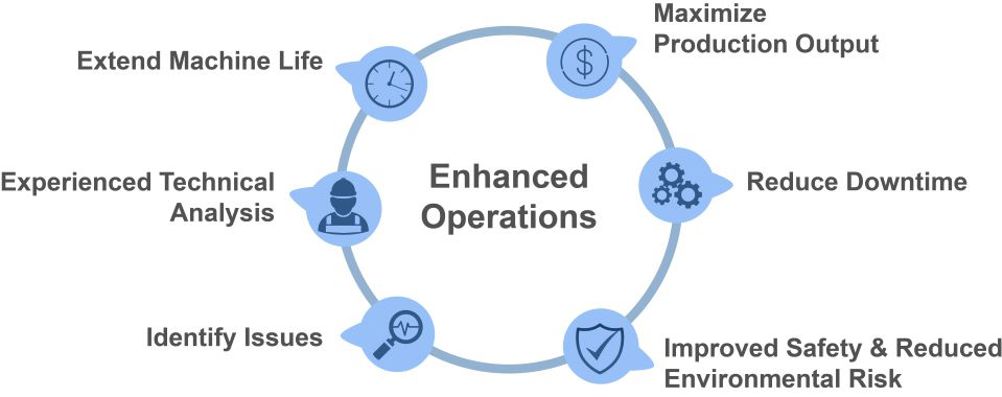With machine unpredictability at an all-time high, the need to stay agile, proactive and productive is a must for engineers and operators. To do so without incurring huge costs is of even greater importance. Thankfully, with remote condition monitoring sensors, these worries are a thing of the past.
Traditionally, machine monitoring is a tedious, manual process that involves multi-step diagnostics and up to five or more employees to collect and analyze data before determining a solution. Additionally, traditional monitoring has been much more reactive due to equipment limitations and personnel constraints. In other words, engineers would often wait until a problem occurs and then go in to fix it. This strategy resulted in lost money, wasted repair hours and significant downtime that affected the bottom line of the business.
On the other hand, a machine health monitoring system improves plant reliability by enabling equipment to run with less unplanned downtime. Smart sensors work by monitoring and logging the vibration and temperature of machinery, capturing transient events and malfunctions in real time via Bluetooth datasharing to a cloud connected device. Essentially, these sensors are designed to identify a problem as it starts to occur before it results in a total machine shut down.
Here’s how it works.
Machines can be monitored in a matter of minutes with the installation of condition monitoring sensors. There’s no power or wires to add to your machine, and the sensors are small enough to fit in just about any tight space. Sensors can typically be installed in a variety of ways, including a direct bolt-on connection, epoxy, or even magnetic mounting.
After installation, the sensors start monitoring equipment immediately. There are no complicated commissioning steps required. Built-in edge computing processes vibration data instantly to ensure correct data to enable in-depth analysis of equipment health. The analysis and diagnostics are available immediately through a connected platform to provide accurate, up-to-the-minute performance data to plant operators and engineers on their smart mobile devices. The sensor data can even be integrated with existing processes and capabilities, providing a holistic understanding of machine health.
Recognizing that many engineers and operators are already overworked and have more than they can handle, companies now offer full-service monitoring partnerships that will ensure the problems detected by these sensors are identified, evaluated and solved expertly on behalf of the person in charge. These partners offer a number of advantages, including flexibility of services where companies can choose to be as hands on or hands off with their machine diagnostics as they prefer, and reduced downtime where experienced analysts will be able to utilize the latest technology to catch damage or malfunctions before they turn into catastrophic events, while utilizing machine expertise and repair facilities to implement solutions to properly fix the issues. Field service personnel can even train staff on how to maintain a healthy and efficient facility. Other advantages include stable, experienced staff and 24/7 risk mitigation.
Finding top talent is very difficult in today’s world. Instead of worrying about downtime during staff transitions, a monitoring partner guarantees uninterrupted support through even the most challenging times. Engineers and plant managers can also rest easy knowing that their machines are being constantly monitored by an expert team.
Machine performance doesn’t have to be a headache, and in a world where agility and proactivity are rewarded, reactive maintenance simply isn’t enough. Engineers and operators can save time, money and peace of mind with condition monitoring sensors and service partners.

About the author
This article was written by Akshat Sharma, Global Monitoring & Controls Manager, ITT.
This article first appeared in the July/August 2023 issue of World Pumps magazine. To read the full issue, click here.







